Who was Emanuel Swedenborg?
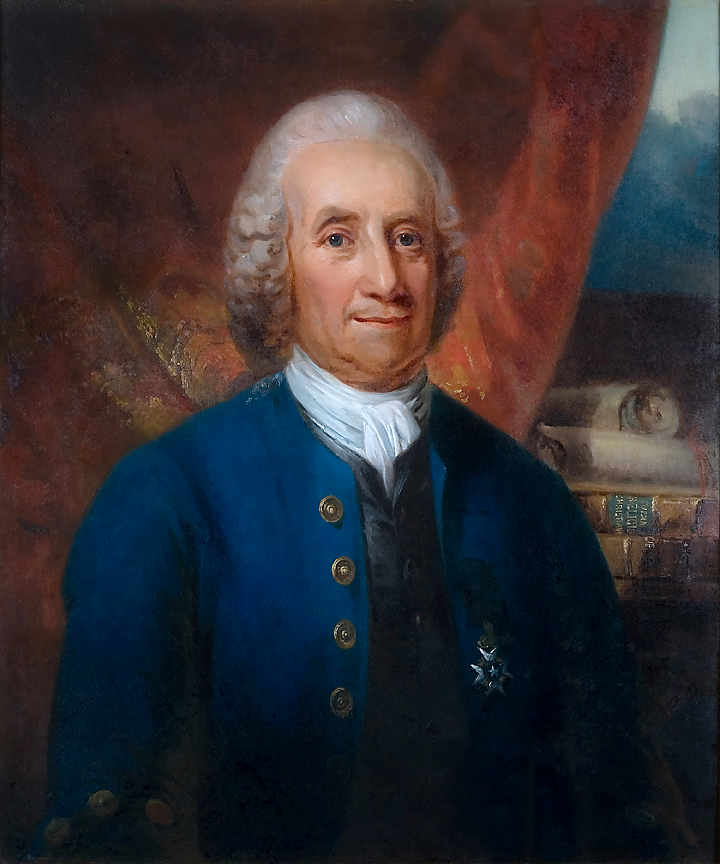 Emanuel Swedenborg, a Swedish philosopher, scientist, and mystic who lived from 1688 to 1772, had a profound impact on the development of Western spirituality and psychology. His visionary experiences and ideas about the nature of the spiritual world and its relationship to the material realm influenced many thinkers, including the renowned Swiss psychiatrist Carl Jung.
Emanuel Swedenborg, a Swedish philosopher, scientist, and mystic who lived from 1688 to 1772, had a profound impact on the development of Western spirituality and psychology. His visionary experiences and ideas about the nature of the spiritual world and its relationship to the material realm influenced many thinkers, including the renowned Swiss psychiatrist Carl Jung.
“Kindness is an inner desire that makes us want to do good things even if we do not get anything in return. It is the joy of our life to do them. When we do good things from this inner desire, there is kindness in everything we think, say, want, and do.”
― Emanuel Swedenborg
Swedenborg’s Spiritual Visions and Philosophy
Swedenborg was a brilliant scientist and philosopher who made significant contributions to various fields, including mathematics, geology, and anatomy. However, in his mid-fifties, he experienced a series of profound spiritual awakenings that transformed his life and work.
During these mystical experiences, Swedenborg claimed to have visited the spiritual world and communicated with angels and other spiritual beings. He described the spiritual world as a realm of love, wisdom, and purpose, intimately connected to the material world and the lives of human beings.
Swedenborg’s spiritual philosophy is based on the idea of correspondences, which holds that there is a symbolic relationship between the material and spiritual realms. He believed that every object, event, and phenomenon in the material world has a corresponding spiritual meaning and significance.
Jung’s Psychology and the Collective Unconscious
Carl Jung, the founder of analytical psychology, was deeply influenced by Swedenborg’s ideas about the nature of the psyche and the relationship between the material and spiritual realms. Jung’s concept of the collective unconscious, in particular, bears a striking resemblance to Swedenborg’s vision of the spiritual world.
According to Jung, the collective unconscious is a universal dimension of the psyche that contains archetypes, symbols, and patterns that are shared by all human beings. These archetypal structures shape our thoughts, feelings, and behaviors in powerful ways, often without our conscious awareness.
Jung believed that the archetypes of the collective unconscious are not merely psychological constructs, but are also spiritual realities that connect us to a larger cosmic order. In this sense, Jung’s understanding of the psyche is deeply resonant with Swedenborg’s vision of the spiritual world and its relationship to the material realm.
Implications for Psychology and Spirituality
The ideas of Emanuel Swedenborg and Carl Jung have significant implications for our understanding of the relationship between psychology and spirituality. Their work suggests that the human psyche is not merely a product of individual experience and conditioning, but is also shaped by transpersonal and archetypal forces that connect us to a larger spiritual reality.
This understanding challenges the reductionistic and materialistic assumptions of much of modern psychology, which tends to view the psyche as a purely individual and biological phenomenon. Instead, Swedenborg and Jung invite us to consider the ways in which our psychological experiences are intimately connected to spiritual dimensions of reality.
In the context of psychotherapy, this perspective suggests that true healing and transformation require not only an exploration of individual psychology, but also a recognition of the spiritual and archetypal dimensions of the psyche. By working with dreams, symbols, and visionary experiences, therapists can help clients connect with the deeper layers of their being and access the wisdom and guidance of the spiritual world.
Moreover, Swedenborg and Jung’s ideas have important implications for the development of a more integrative and holistic approach to spirituality. Rather than viewing spirituality as a separate realm from psychology and the material world, their work suggests that these dimensions are intimately interconnected and mutually illuminating.
Emanuel Swedenborg’s mystical visions and spiritual philosophy had a profound influence on the development of Carl Jung’s psychological theories, particularly his concept of the collective unconscious. Their work challenges us to reconsider the relationship between psychology and spirituality, and to recognize the ways in which our individual experiences are shaped by transpersonal and archetypal dimensions of reality.
“for heaven is within us, and people who have heaven within them come into heaven. The heaven within us is our acknowledgment of the Divine and our being led by the Divine.”
― Emanuel Swedenborg, Heaven and Hell
Swedenborg’s Relevance to Psychotherapy
Emanuel Swedenborg’s mystical visions and spiritual philosophy have significant implications for the field of psychology and the practice of psychotherapy. While Swedenborg predates the formal establishment of psychology as a scientific discipline, his ideas about the nature of the psyche and the relationship between the material and spiritual realms anticipate many of the key insights of depth psychology and transpersonal psychology.
Swedenborg’s concept of correspondences, which holds that there is a symbolic relationship between the material and spiritual worlds, is particularly relevant to the practice of psychotherapy. This idea suggests that our psychological experiences, including our thoughts, emotions, and behaviors, are not merely random or meaningless, but are connected to deeper spiritual realities.
In the context of psychotherapy, this perspective invites us to explore the symbolic and archetypal dimensions of a client’s experiences, rather than simply focusing on surface-level symptoms or behaviors. By helping clients to understand the spiritual significance of their psychological struggles, therapists can facilitate a process of deep healing and transformation.
Swedenborg’s descriptions of the spiritual world as a realm of love, wisdom, and purpose also have important implications for the therapeutic process. This view suggests that the ultimate goal of psychotherapy is not simply to alleviate symptoms or improve functioning, but to help clients connect with their inherent spiritual nature and to align their lives with a higher purpose.
This perspective is consistent with the humanistic and existential approaches to psychotherapy, which emphasize the importance of meaning, values, and self-actualization in the therapeutic process. By helping clients to explore their deepest aspirations and to connect with a sense of spiritual purpose, therapists can facilitate a process of profound personal growth and transformation.
Swedenborg’s influence on Carl Jung’s psychology is particularly significant in this regard. Jung’s concept of the collective unconscious, which he described as a universal dimension of the psyche that contains archetypal symbols and patterns, is deeply resonant with Swedenborg’s vision of the spiritual world.
Jung believed that the archetypes of the collective unconscious are not merely psychological constructs, but are also spiritual realities that connect us to a larger cosmic order. This perspective suggests that the process of individuation, which Jung described as the integration of the conscious and unconscious aspects of the psyche, is ultimately a spiritual journey of self-discovery and transcendence.
In the practice of Jungian psychotherapy, this perspective is reflected in the use of techniques such as dream analysis, active imagination, and the exploration of archetypal symbols and myths. By helping clients to connect with the deeper layers of their psyche and to explore the spiritual dimensions of their experiences, Jungian therapists can facilitate a process of profound personal transformation.
Beyond the specific influence on Jungian psychology, Swedenborg’s ideas have broader implications for the integration of spirituality and psychology in the therapeutic process. His vision of the unity of matter and spirit suggests that true healing and transformation require a holistic approach that addresses both the psychological and spiritual dimensions of human experience.
This perspective is reflected in the growing field of transpersonal psychology, which seeks to integrate insights from spiritual traditions and practices into the theories and methods of modern psychology. Transpersonal therapists recognize that the human psyche is not limited to the individual ego or the personal unconscious, but also includes transpersonal dimensions of consciousness that connect us to a larger spiritual reality.
By incorporating techniques such as meditation, mindfulness, and spiritual inquiry into the therapeutic process, transpersonal therapists can help clients to access these deeper dimensions of their being and to experience a sense of unity and interconnectedness with the larger cosmos.
In conclusion, Emanuel Swedenborg’s mystical visions and spiritual philosophy have significant implications for the field of psychology and the practice of psychotherapy. His ideas about the symbolic relationship between the material and spiritual worlds, the spiritual nature of the psyche, and the ultimate goal of human development as a journey of spiritual awakening and transcendence, anticipate many of the key insights of depth psychology and transpersonal psychology.
By integrating Swedenborg’s insights into the theories and methods of modern psychology, therapists can develop a more holistic and transformative approach to the therapeutic process, one that addresses both the psychological and spiritual dimensions of human experience. As the field of psychology continues to evolve and expand, the visionary work of Emanuel Swedenborg will undoubtedly continue to inspire and guide us in our quest for deeper understanding and transformation.
Emanuel Swedenborg’s Life and Work
Emanuel Swedenborg (1688-1772) was a Swedish scientist, philosopher, and theologian whose visionary experiences and profound spiritual insights had a significant impact on the development of Western esotericism, Spiritualism, and New Age thought.
Timeline of Emanuel Swedenborg’s Life
1688: Emanuel Swedenborg is born on January 29 in Stockholm, Sweden, to Jesper Swedberg, a Lutheran bishop, and Sara Behm.
1699-1709: Swedenborg attends the University of Uppsala, where he excels in his studies of mathematics, physics, and astronomy.
1710-1715: He embarks on a grand tour of Europe, visiting England, Holland, France, and Germany, where he meets with leading scientists and intellectuals of the time.
1716-1747: Swedenborg pursues a successful career as a scientist and inventor, making significant contributions in fields such as metallurgy, mechanics, and economics. He publishes several works on these subjects, including “Daedalus Hyperboreus” (1716-1718) and “Principia” (1734).
1743-1744: He begins to experience profound spiritual dreams and visions, which he records in his “Journal of Dreams.”
1747: Swedenborg reports a transformative spiritual experience in London, where he claims to have been called by God to abandon his scientific pursuits and focus on spiritual matters.
1749-1756: He publishes his first major theological work, “Arcana Coelestia” (Heavenly Secrets), an eight-volume commentary on the biblical books of Genesis and Exodus.
1758: Swedenborg publishes several important theological works, including “Heaven and Hell,” “The Last Judgment,” and “The New Jerusalem and Its Heavenly Doctrine.”
1763: He publishes “Divine Love and Wisdom,” a work exploring the nature of God and the relationship between the divine and the human.
1764: “Divine Providence” is published, in which Swedenborg elaborates on his understanding of God’s guidance and governance of the universe.
1768: “Conjugial Love” is published, a work discussing the spiritual nature of marriage and human sexuality.
1771: Swedenborg’s final major work, “True Christian Religion,” is published, presenting a comprehensive summary of his theological system.
1772: Emanuel Swedenborg dies on March 29 in London, England, at the age of 84.
Early Life and Scientific Career
Emanuel Swedenborg was born on January 29, 1688, in Stockholm, Sweden, to a family of prominent Lutheran clergy. His father, Jesper Swedberg, was a bishop and a professor of theology at the University of Uppsala. Swedenborg’s early education was steeped in the sciences and humanities, and he quickly distinguished himself as a brilliant student.
From 1699 to 1709, Swedenborg attended the University of Uppsala, where he focused his studies on mathematics, physics, and astronomy. After completing his education, he embarked on a grand tour of Europe from 1710 to 1715, meeting with many of the leading scientists and intellectuals of the time.
Upon his return to Sweden, Swedenborg began a successful career as a scientist and inventor. He made significant contributions to fields such as metallurgy, mechanics, and economics, publishing several notable works, including “Daedalus Hyperboreus” (1716-1718) and “Principia” (1734). During this period, he also served as an assessor on the Swedish Board of Mines, further cementing his reputation as a leading scientific mind.
Spiritual Awakening and Theological Writings
Around 1743, Swedenborg began to experience a series of profound spiritual dreams and visions, which he meticulously recorded in his “Journal of Dreams.” These experiences marked the beginning of a gradual shift in his focus from scientific pursuits to spiritual and theological explorations.
In 1747, while on a trip to London, Swedenborg reported a transformative spiritual experience in which he claimed to have been called by God to abandon his scientific work and dedicate himself to the study and revelation of spiritual truths. This event marked a turning point in his life, as he began to devote himself fully to the exploration of the spiritual realm and the production of his theological writings.
From 1749 to 1756, Swedenborg published his first major theological work, “Arcana Coelestia” (Heavenly Secrets), an eight-volume commentary on the biblical books of Genesis and Exodus. In this work, he presented his unique method of biblical interpretation, known as the “doctrine of correspondences,” which held that the material world and the spiritual world were intimately connected through a series of symbolic correspondences.
In the following years, Swedenborg produced a prolific body of theological writings, including “Heaven and Hell” (1758), “Divine Love and Wisdom” (1763), “Divine Providence” (1764), “Conjugial Love” (1768), and “True Christian Religion” (1771). These works presented a comprehensive and highly original theological system, which explored topics such as the nature of God, the structure of the spiritual world, the relationship between the human soul and the divine, and the path to spiritual regeneration.
Influence and Legacy
Swedenborg’s visionary experiences and theological writings had a profound impact on the development of various esoteric and spiritual movements, including Spiritualism, Theosophy, and New Age thought. His emphasis on the importance of direct spiritual experience and the exploration of the inner life resonated with many thinkers and seekers throughout history.
Influential figures such as the poet and artist William Blake, the philosopher and essayist Ralph Waldo Emerson, and the psychologist Carl Jung were deeply inspired by Swedenborg’s ideas and incorporated elements of his thought into their own works. Swedenborg’s teachings also led to the formation of the Church of the New Jerusalem, a Christian denomination based on his theological writings, which continues to have a presence in many countries around the world.
Emanuel Swedenborg’s life and work stand as a testament to the power of spiritual exploration and the enduring impact of visionary thought. His unique blend of scientific rigor, philosophical depth, and mystical insight has earned him a place among the most influential and original thinkers in the history of Western spirituality. Today, his ideas continue to inspire and challenge scholars, theologians, and spiritual seekers alike, inviting us to explore the profound mysteries of the human soul and its relationship to the divine.
Major Published Works by Emanuel Swedenborg
1. Arcana Coelestia (Heavenly Secrets, 1749-1756)
An eight-volume commentary on the biblical books of Genesis and Exodus, presenting Swedenborg’s doctrine of correspondences and his unique method of biblical interpretation.
2. Heaven and Hell (1758)
A detailed description of the structure and nature of the spiritual world, including the afterlife, angels, and the relationship between the human soul and the divine.
3. Divine Love and Wisdom (1763)
An exploration of the nature of God and the relationship between the divine and the human, emphasizing the centrality of love and wisdom in the universe.
4. Divine Providence (1764)
A treatise on God’s guidance and governance of the universe, discussing topics such as free will, predestination, and the problem of evil.
5. Conjugial Love (1768)
A work discussing the spiritual nature of marriage and human sexuality, presenting Swedenborg’s vision of the ideal relationship between men and women.
6. True Christian Religion (1771)
Swedenborg’s final major work, presenting a comprehensive summary of his theological system and his vision of a new, spiritually enlightened Christianity.
Other notable works by Swedenborg include:
7. The Last Judgment (1758)
8. The New Jerusalem and Its Heavenly Doctrine (1758)
9. The Worship and Love of God (1749)
These works, along with Swedenborg’s other writings and personal journals, form a rich and complex body of spiritual literature that continues to inspire and challenge readers to this day. His unique perspective on the relationship between the material and spiritual worlds, and his emphasis on the importance of inner spiritual growth, have made him a seminal figure in the history of Western esotericism and spirituality.
Did you enjoy this article? Checkout the podcast here.
Read More Depth Psychology Articles:
Taproot Therapy Collective Podcast
Mystics and Gurus
Bibliography:
- Swedenborg, E. (1749-1756). Arcana Coelestia (Heavenly Secrets).
- Swedenborg, E. (1758). Heaven and Hell.
- Swedenborg, E. (1763). Divine Love and Wisdom.
- Swedenborg, E. (1764). Divine Providence.
- Swedenborg, E. (1768). Conjugial Love.
- Swedenborg, E. (1771). True Christian Religion.
Further Reading:
- Benz, E. (2002). Emanuel Swedenborg: Visionary Savant in the Age of Reason. Swedenborg Foundation.
- Larsen, S. (1988). Emanuel Swedenborg: A Continuing Vision. Swedenborg Foundation.
- Woofenden, W.R. (2011). Swedenborg Explorer’s Guidebook: A Research Manual. Swedenborg Foundation.
- Taylor, E. (2009). The New Jerusalem: Emanuel Swedenborg’s Mystical Philosophy. Swedenborg Society.
- Jung, C.G. (1960). Synchronicity: An Acausal Connecting Principle. Princeton University Press.
- Hanegraaff, W.J. (1998). New Age Religion and Western Culture: Esotericism in the Mirror of Secular Thought. State University of New York Press.
- Williams-Hogan, J. (2005). Swedenborg and His Influence. Swedenborg Foundation.
- Goodrick-Clarke, N. (2008). The Western Esoteric Traditions: A Historical Introduction. Oxford University Press.
- Versluis, A. (2007). Magic and Mysticism: An Introduction to Western Esotericism. Rowman & Littlefield Publishers.
- Smoley, R. (2009). The Essential Swedenborg: Basic Teachings of Emanuel Swedenborg. Tarcher/Penguin.
- Berridge, K. (1988). Emanuel Swedenborg: Essential Readings. North Atlantic Books.
- Dole, G.F. (2003). Freedom and Evil: A Pilgrim’s Guide to Hell. Swedenborg Foundation.
- Rose, J.S. (2011). Scribe of Heaven: Swedenborg’s Life, Work, and Impact. Swedenborg Foundation.
- Emerson, R.W. (1850). Representative Men: Seven Lectures. Phillips, Sampson and Company. (Includes a chapter on Swedenborg)
- Corbin, H. (1997). Swedenborg and Esoteric Islam. Swedenborg Foundation.



















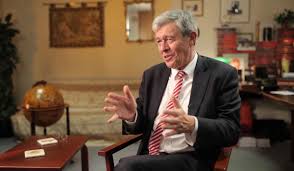
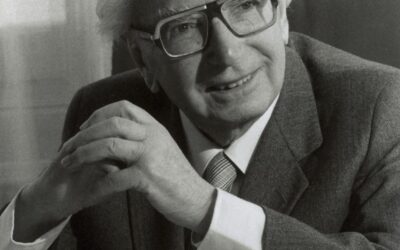
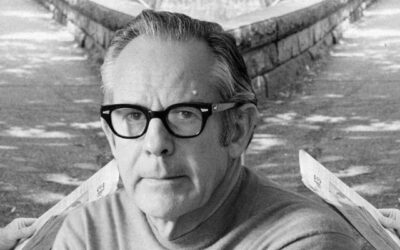
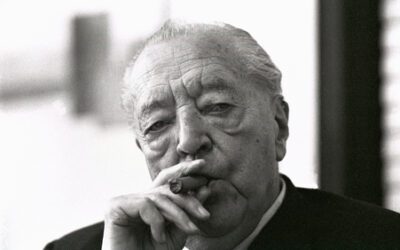
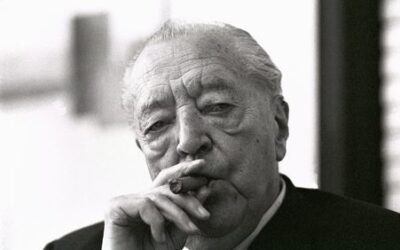
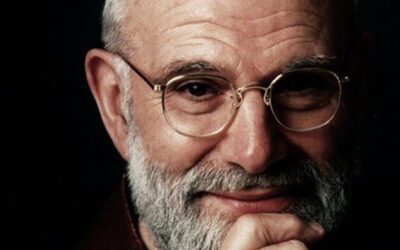

0 Comments